Receive a presentation of services and expert advice
The best people in the industry oversee your brand development process
Best branding agency and graphic design studio – WeLoveBrands❤️
What to do if you need to come up with a brand name but have no ideas? Or there are a lot of options, but they all somehow don’t fit very well - do you want something more unique and cool? What to grab onto, what techniques to use, where to look for inspiration? This is exactly what we will talk about in the article.
The name of a brand is a key component of the success of its promotion in the market. It depends on the name whether the brand will be recognizable, whether it will become popular and how the target audience will generally perceive it. The importance of this task and the huge number of conditions give rise to the conviction that creating naming is an extremely difficult and almost impossible task. But this only seems at first glance. In fact, the simpler and clearer the name, the better it is perceived and remembered by the audience. There is plenty of evidence of this, take, for example, Apple, Cat or Nova Poshta.
For most ordinary consumers, the concepts of brand and trademark are one and the same. People who are not involved in marketing don’t know the difference, so they don’t differentiate between them. In fact, the concept of a brand is much broader than the concept of a trademark. Since it consists not just of the company name, but also includes a lot of audio-visual components: logo, slogan, music, commercials, etc. Therefore, when a person hears the name of a brand, a specific image instantly appears in his head, inextricably linked with an emotional response.
A brand is, first of all, an image that is created to inspire loyalty, sympathy and trust in the company in the audience. Therefore, naming for a brand is a top priority. After all, the name should literally be etched in the memory and remain there forever.
There are a number of conditions that a company and brand name must meet. They are divided into 2 groups - according to content and form. Correct naming always meets the following requirements:
The name must contain a certain brand characteristic (or several at once):
|
|
|
the idea with which the company was created; |
| how the company differs from its competitors; | ||
| what is the main advantage of the company; | ||
| price policy; | ||
| benefit to the consumer from the product or service offered; | ||
| social level of the consumer. |
2. The title should NOT contain:
| negative message; | ||
| insulting consumer feelings; | ||
| misinformation. |
Formal
|
Phonetic:
|
||
Phonosemantic:
|
||
Lexicographic:
|
||
Legal:
|
In other words, the brand name should be unique, positive, easy to read, easy to remember and easy to reproduce. It should also be easy to hear and fully consistent with the company’s business concept.
If you are faced with the task of developing a brand name, then there are only two solutions:
Order naming from professionals.
Develop a name yourself.
Let's take a closer look at what awaits you in each of these cases.
As a rule, business owners turn to companies specializing in brand promotion, PR agencies, and marketing firms for such a service.
In order for a specialist to understand the essence of the task, feel the character of the brand and come up with a name that is ideally suited for it, the customer needs to provide:
| carefully written technical specifications; | ||
| all necessary information about the company in full; | ||
| clearly formulate your wishes regarding the future name. |
|
|
Target audience analysis. To get into the heart of the target audience, you need to analyze it and create the most detailed portrait of a potential buyer:
|
|
Behavioral analysis of a potential buyer:
The answers to these questions should provide a clear understanding of why a potential client will choose this particular brand over a competing company. |
||
| Company analytics When the portrait of the target audience is written down to the smallest detail, you can move on to analyzing the company. At this stage you need to clearly define:
|
||
| Selection of name options After determining the information base from which you can build, you can proceed directly to naming. This is a creative process that requires creative thinking and an out-of-the-box approach. At this stage, dozens of possibly suitable name options are invented. |
||
| Selecting a suitable name The name options obtained at the previous stage are analyzed and sifted through a certain sieve of perception with the following parameters:
After such selection, there are usually several most suitable naming options left, which will subsequently be tested. |
||
| Title testing The selected potential names are presented to the customer, explaining the reason for choosing these particular options and demonstrating the emotional component. Each title must be tested in focus groups consisting of representatives of the target audience. During this testing, the memorability of each name, the degree of euphony and ease of reproduction, as well as the emotional component are assessed. Based on the results of the verification, a “winner” is selected, which will become the brand name. |
||
| Statement After passing all checks, the winning name must be approved by the customer. If everything suits him, you can start developing a slogan and logo. |
||
| Legal verification and name registration Before registering a brand name, it must pass a uniqueness check. For this purpose, special Internet resources, or government services and bodies are usually used. Registration takes place in special patent bureaus, which examine the application and enter the name into the register. |
There are two ways to select naming that can greatly facilitate this process for non-professionals:
| Brainstorm . The essence of brainstorming is that several people or a whole team get together and begin to put forward their ideas, “throwing out” options. This is a very effective method, as really cool ideas usually emerge from the discussion. By the way, the brainstorming method is often used by professional namers, copywriters and marketers. With such development, you can start from the location of the company, the name of its founder or the main product/service. | ||
|
|
Logical search. The essence of this naming technique is to sort through all possible names according to the following criteria:
|
Regardless of the chosen method, it is better to choose a name in pairs or in the company of like-minded people - this will make it possible to generate the maximum number of diverse names, and will also give rise to new ideas.
Better yet, entrust the development of naming to the specialists of the WeLoveBrands studio. We will develop a capacious, stylish, sonorous name for your brand that the audience will remember and that will work for the business.
Analyzing the names of various brands, you can see that they are all grouped according to a certain characteristic. For clarity, let's look at each of these types in more detail:
Traditional names reflect the type of activity of the company. For example, “Korovka”, “Dairy farm” for companies producing dairy products, “Sadochok” - for a juice manufacturer, etc.
Geographical names - contain a mention of the place of production of products or the location of the company: “Mirgorodskaya”, “Prostokvashino”, “Zhigulevskoe”, etc.
Descriptive names – give a direct reference to the product or service “World of Plumbing”, “Window”, “Windows-Doors”, etc. By the way, today this type of naming is very rarely used.
Associative names - their task is to evoke a certain association, image, emotion in consumers. For example, “Zhivochik”, “Hedonist”, “Jaguar”, etc.
Other types - this category includes other naming methods, such as by the name of the company owner, combined, and so on.
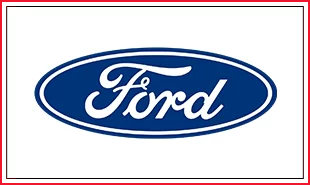
1. Use the name of the company founder. This is perhaps the easiest naming method for a brand. The only condition is that the first and last names (together or separately) must sound harmonious, without causing funny or ambiguous associations. You also need to ensure that the first and last name do not repeat a brand already existing on the market. It is desirable that there are not even simply consonant names. There are plenty of examples of using this naming method: Chanel, Ford, Parker, Dolce&Gabbana, Dior, McDonald's, Hewlett-Packard, Procter&Gamble, Gillette and so on. This list can be continued endlessly.
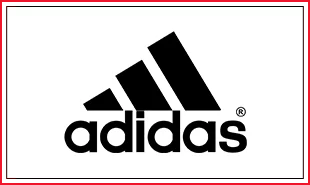
2. Combine words. As a rule, two words are combined in whole or in part in a brand name, resulting in unique combinations and neologisms. The most striking examples of such naming are the famous brands Pampers, Adidas, Pepsi, Volkswagen, Starbucks, Ukrnafta, Aquafresh, etc. With this method of naming, special attention should be paid to the clarity of the resulting word and the absence of strange or dubious connotations. To avoid such misunderstandings, the name should be carefully analyzed for the presence of negative connotations and unwanted associations. Also think carefully about how the neologism name will look and sound in English transliteration.

3. Make abbreviations. Naming in the form of an acronym is an ideal option for brands with long names that need to be shortened. This greatly facilitates the perception of the name and increases its memorability. This is exactly what the companies KFC, BMW, IKEA, NASA, GUM, TSUM and so on did. By the way, it is recommended to use abbreviations as names for companies and brands that operate in the international market.
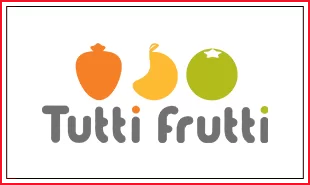
4. Use alliteration. Alliteration is a literary device that involves adding rhythm and rhyme to a title, or adding repetition. Such names are remembered best, as they fit perfectly on the ear, thanks to their rhythmic sound. Examples are well known to us all: M&M's, Coca-Cola, Chupa-Chups, Kit-Kat, Samsung, Tutti-Frutti, Kitecat and many others.
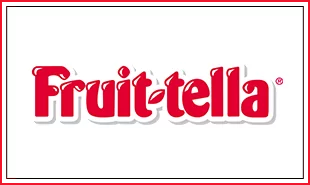
5. Use the analogy method. Names that evoke certain associations in the audience are also very memorable. You just need to make sure that the associations and essence of the product/service of a particular brand coincide. With the right combination, you can get a really cool name, with the advantage of quick recognition and excellent memorability. The source of inspiration for finding suitable associations can be characters from films, cartoons, world history, flora, fauna, space objects, and indeed anything else. Examples of such names: Puma, Jaguar, Chevrolet Impala, Red Bull, Bounty, Dove, Frutella, Sony and so on.
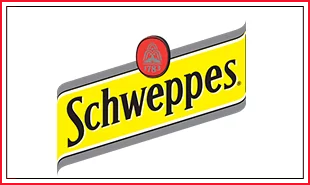
6. Imitation of sounds. Typically, this naming method is used to develop brand names whose product can be associated with some sound. For example, this technique is used in the name of Twitter (the chirping of a bird), Schweppes (the hissing of bubbles in soda) and so on.
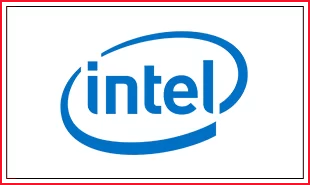
7. Truncation of words. The essence of this naming method is to cut out syllables or other parts of words. If you want to create a name from several words, but leaving them entirely will be too long and inconvenient for memorization and pronunciation, then the truncation method is simply an ideal option. By the way, in this way it is often possible to create sonorous and capacious names. The world famous brand Intel is just such a case. This name is formed by truncation of two words: Integral Electronics.
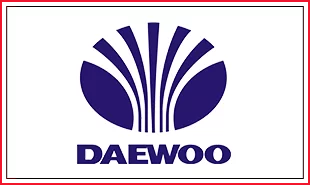
8. The name is a mystery. Usually these are names that contain some kind of secret. At the very least, it takes a lot of work to translate them. Usually, such “mysterious” words are searched for in rare or ancient languages. Examples include the names of brands such as Nivea, Daewoo and others. Perhaps understanding their meaning is not at an intuitive level, but they are well remembered due to their unusualness and intrigue.
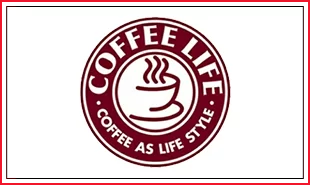
9. Metonymy. This is a literary device, the essence of which is to reflect in the title the transition from the particular to the general or vice versa - from the general to the particular. For example, the name Burger King tells the audience that this is not an ordinary sandwich, but a real king of burgers. Or other examples from the same category: Sushi Planet, Starbucks, Coffee Life, Universal Pictures and so on.
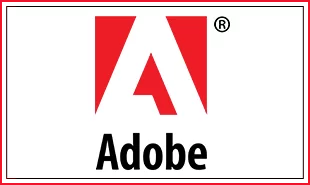
10. Words not related to the product or service. The naming of a brand should not at all be associated with its activities. The name can be absolutely any word. And to find it, you don’t need to organize hours-long, much less multi-day, brainstorms. It’s enough just to look carefully at the world around you, because every thing, living creature or phenomenon can become, if not the name itself, then a source of inspiration. For example, the brand names Adobe, Apple, Fujifilm, Borjomi and many others were created.
And remember that the brand becomes popular and loved not only because of the name, but also thanks to its cool services, unique high-quality products and excellent service. Therefore, it is better to develop this side of the brand, and entrust the development of its name to the professionals of the WeLoveBrands studio. You will save time, money and effort, and as a result you will get a cool, capacious, sonorous brand name. We will develop a naming that will reflect the character of the brand, convey the right message and stick in the memory and hearts of your target audience.